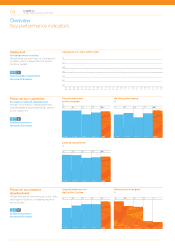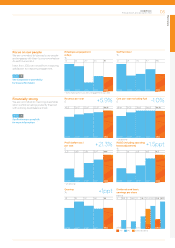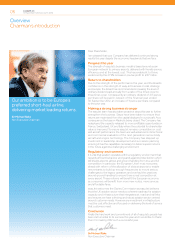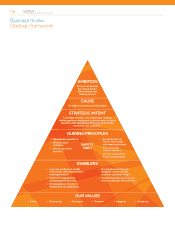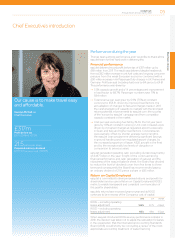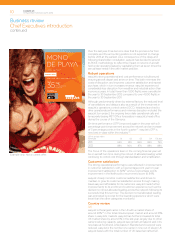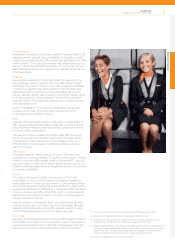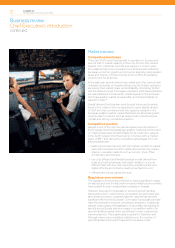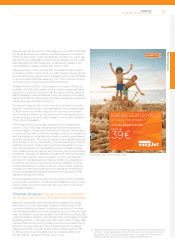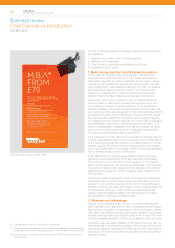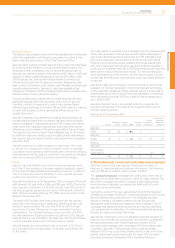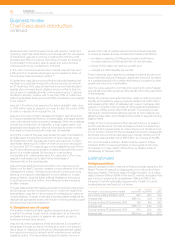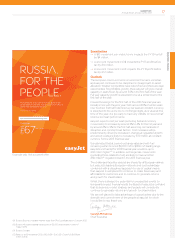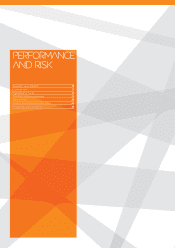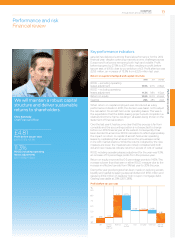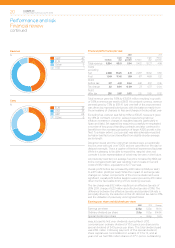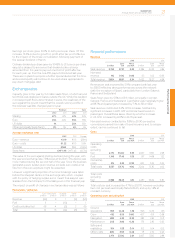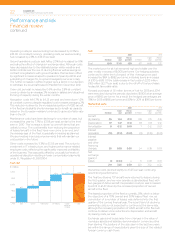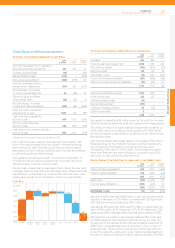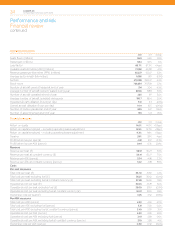EasyJet 2012 Annual Report Download - page 16
Download and view the complete annual report
Please find page 16 of the 2012 EasyJet annual report below. You can navigate through the pages in the report by either clicking on the pages listed below, or by using the keyword search tool below to find specific information within the annual report.
In order to execute against our strategy, easyJet is focused on four
key objectives:
1. Build strong number 1 and 2 network positions
2. Maintain cost advantage
3. Drive demand, conversion and yields across Europe
4. Disciplined use of capital
1. Build strong number 1 and 2 network positions
A core easyJet strength is its pan-European network which
connects more of the top 100 city to city market pairs than any
other airline. easyJet’s principal competitors are the legacy carriers
operating in slot constrained, primary airports over whom easyJet
enjoys a significant cost advantage, allowing it to offer competitive,
affordable fares. easyJet has the number 1 or 2 market share
position in 21 valuable slot constrained airports such as London
Gatwick, Paris Orly, Milan Malpensa, Amsterdam and Geneva.
easyJet has built up key positions in slot constrained airports
overanumber of years which provide the Company with a very
competitive and resilient network platform for its operations.
easyJet’s strategy is to continue to build positions of strength in its
key markets and to reallocate aircraft to the routes and bases which
will deliver the highest returns. Routes are measured on the returns
they are delivering against the Company’s returns target. Capacity
on underperforming routes is reallocated, or performance managed
and profitability improved, to deliver an appropriate return. In a
dynamic marketplace, profitability of routes can change over time
and by ensuring that route returns are continually monitored the
Company is most effectively able to drive ROCE.
As a consequence of the desire to re-orientate the easyJet network
to drive sustainable long-term returns, easyJet took the difficult step
of announcing the proposed closure of its Madrid base from winter
2012/13. easyJet will continue to serve Madrid and the rest of Spain
but to do so differently by moving its aircraft to other easyJet bases,
which will deliver higher returns for the airline.
It was clear from the network review that the Madrid base was
delivering returns, significantly below all of easyJet’s other bases.
Thiswas due to a combination of overcapacity in the Spanish
airlinemarket, leading to low revenue per passenger, combined with
high airport charges, which have more than doubled in the last two
years and will be subject to further increases above inflation in the
coming years.
Aircraft have been redeployed in areas which have the potential to
drive higher returns, further evidenced by the strengthening of our
position in Lyon and the opening of the French regional bases in
Nice and Toulouse; the new Lisbon base; London Southend opening
to improve the offering in north London and additional aircraft
based in Gatwick, Basel and Milan with further plans to increase
aircraft based in Edinburgh and Manchester.
2. Maintain cost advantage
easyJet has a cost advantage over its competitors in the airports
that it operates from, allowing it to offer competitive and affordable
fares. Its key competitors in these airports tend to be legacy carriers
with older, less efficient aircraft, lower asset utilisation, lower seat
densities and load factors and higher levels of fixed costs. This lower
cost base enables easyJet to offer the lower fares its customers value.
In addition, easyJet’s asset utilisation of 10.4 block hours per day for
owned aircraft is amongst the highest in the industry. During the
year, asset utilisation decreased by 0.6% year-on-year following the
introduction of shorter but higher returning sectors including French
domestic routes.
(6) To be delivered as part of a GB Airways commitment.
(7) The 16 future easyJet deliveries and 2 ex-GB Airways deliveries are anticipated to
be delivered over the next three financial years; 10 in FY13, 6 in FY14 and 2 in FY15.
(8) Purchase options and rights may be taken on any A320 family aircraft and are
valid until 2015.
Example only. Not a current offer.
M.B.A.
*
From
£79
Flexibility
We offer flexible fares from £79 one way.†
Allocated seating
We’re introducing allocated seating
on every flight.
Comprehensive flight network
We fly on more of the top 100
European routes than any other airline.
Business-friendly schedule
We fly from London to 22 major
European cities and back, within
a single business day.
* That’s ‘Much Better Airline’, by the way.
And you don’t need a degree from Harvard
to work out why:
Business sense, not business class.
Business review
Chief Executive’s introduction
continued
easyJet plc
Annual report and accounts 2012
14


